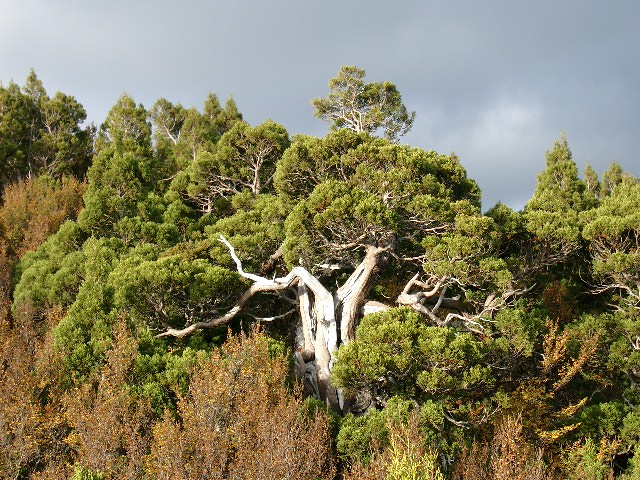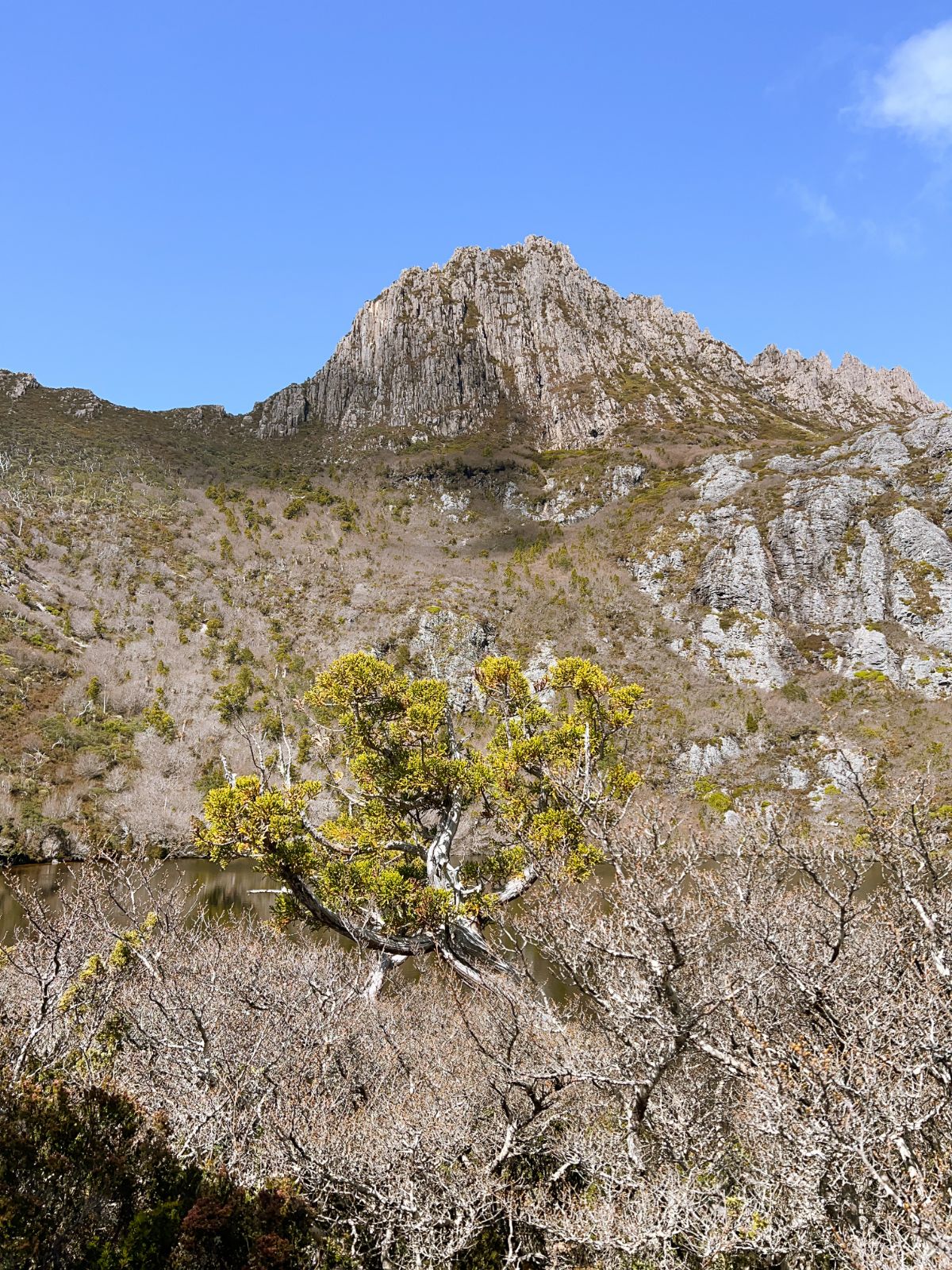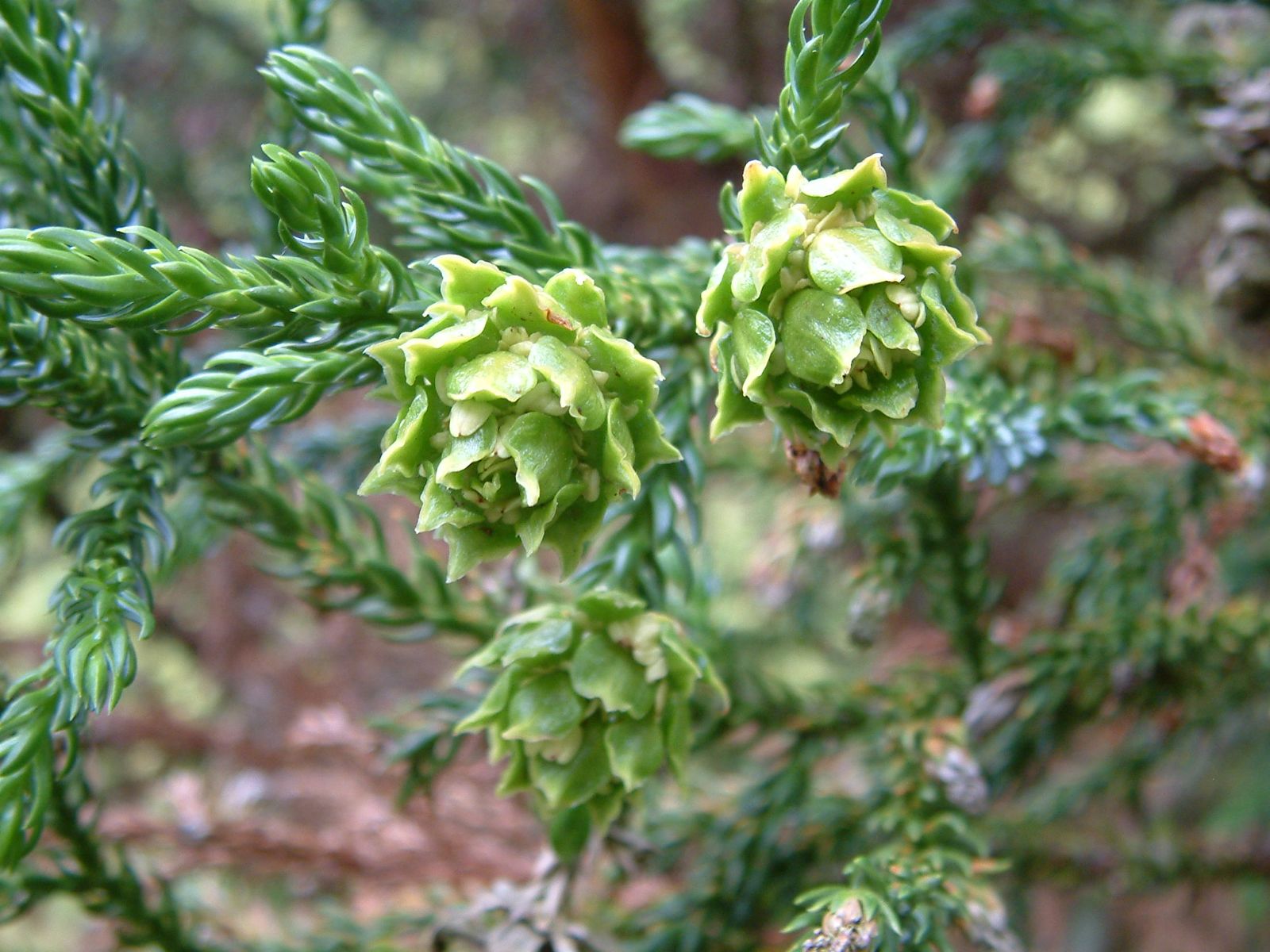Athrotaxis selaginoides
Credits
Article from Bean's Trees and Shrubs Hardy in the British Isles
Recommended citation
'Athrotaxis selaginoides' from the website Trees and Shrubs Online (treesandshrubsonline.
Genus
Common Names
- King William Pine
A tree to 90 ft under optimum conditions but usually smaller, with a reddish-brown, furrowed, and somewhat fibrous bark, which is soft and spongy as in Sequoiadendron giganteum. It is very distinct from the other two species in its stout branchlets and in the size of the leaves, which are 1⁄4 to 1⁄2 in. long, awl-shaped, ending in a sharp point, keeled at the back, hollowed inside, and with a band of white stomata each side the midrib. The leaves are incurved, but stand away from the twig at angles of 30° to 45°. The branchlets with their foliage are about 5⁄8 in. in diameter. Cones the largest of the three species, to 3⁄4 in. or even more wide, the scales tapered towards the base, and with a thin, pointed, triangular apex. Bot. Mag., t. 9639.
Native of western and south-western Tasmania, where it is found in the temperate rain-forest with Nothofagus cunninghamii, etc., or in eucalyptus woodland, more rarely in small pure stands near the tree-line (Forest Trees of Australia, pp. 216–17). It is the most important of the three species, yielding a valuable timber resembling that of redwood, but mature trees have become rare in the wild. In cultivation it has proved the most tender of the three.
As with the other two species, the best examples in the Britsh Isles are to be found in Ireland and Cornwall, as the following records show: Tregrehan, Cornwall, 51 × 31⁄2 ft (1965); Lamellen, Cornwall, 41 × 3 ft (1962); Killerton, Devon, 36 × 11⁄4 ft (1962); Scorrier House, Cornwall, 35 × 23⁄4 ft (1965); Wakehurst Place, Sussex, 31 × 23⁄4 and 33 × 1 ft (1962). The following were all measured in Eire in 1966: Mount Usher, Co. Wicklow, 49 × 5, 43 × 21⁄2, 41 × 31⁄2, 39 × 41⁄2 ft; Kilmacurragh, Co. Wicklow, 48 × 53⁄4 ft; Headfort, Co. Meath, pl. 1927, 32 × 23⁄4 and 27 × 21⁄2 ft.
From the Supplement (Vol. V)
specimens: Wakehurst Place, Sussex, pl. 1917, 40 × 31⁄4 ft (1979); Killerton, Devon, 49 × 21⁄2 ft (1983); Scorrier House, Cornwall, 48 × 33⁄4 ft (1979); Mount Usher, Co. Wicklow, Eire, 56 × 51⁄2 ft and 46 × 5 ft (1975); Kilmacurragh, Co. Wicklow, Eire, 52 × 6 ft (1980).





